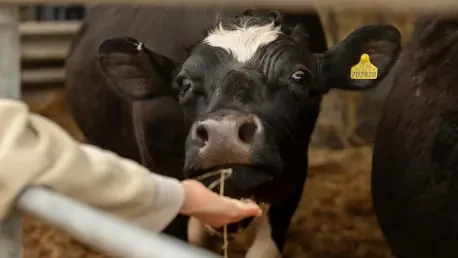South Africa’s red meat industry stands at a critical juncture, grappling with a divisive issue that could reshape its future: the regulation of livestock exports by sea. Picture a sector that employs thousands, sustains rural communities, and contributes significantly to national food security, now caught in a heated debate between economic survival and ethical responsibility. This conflict, centered on the Draft Regulations for the Exportation of Live Animals by Sea, pits animal welfare advocates against industry stakeholders, raising questions about how to balance compassion with commerce in a globalized market.
Overview of the Red Meat Industry and Livestock Exports
The red meat industry remains a cornerstone of South Africa’s agricultural economy, driving substantial revenue and supporting livelihoods across rural landscapes. It encompasses a wide range of activities, from cattle and sheep farming to processing and export, positioning the country as a notable player in international meat markets. This sector not only fuels economic growth but also underpins food security by providing a steady supply of protein to both domestic and foreign consumers.
Livestock exports by sea form a vital component of this industry, with key players targeting markets in the Middle East and beyond. These exports involve transporting large numbers of animals, often under challenging conditions, to meet the demand for live slaughter in importing nations. Major industry bodies and producers rely on this trade to maintain profitability and access lucrative contracts, highlighting the critical role of international commerce in sustaining the sector.
Beyond market dynamics, the economic contributions of the red meat industry are profound. It creates thousands of jobs, particularly in remote areas where alternative employment opportunities are scarce, while bolstering rural development. The ripple effect of this sector supports ancillary industries such as feed production and transport, cementing its importance as a pillar of agricultural stability and community welfare.
Current Debate on Livestock Export Regulations
Stakeholder Perspectives on Draft Regulations
At the heart of the ongoing controversy are the Draft Regulations for the Exportation of Live Animals by Sea, proposed by the Department of Agriculture. These rules aim to formalize standards for a practice long governed by mere guidelines, sparking sharp divisions among stakeholders. While the intent is to improve oversight, opinions on their effectiveness and implications vary widely across the spectrum.
The National Council of SPCAs (NSPCA) has emerged as a fierce critic, denouncing the draft as insufficient to prevent animal cruelty during sea transport. Their primary grievance lies in the lack of enforceable mechanisms, arguing that without strict penalties or oversight powers, the regulations fail to protect animals from suffering on long voyages. This position reflects a broader concern that industry interests are being prioritized over ethical considerations.
In contrast, the Red Meat Industry Services (RMIS) advocates for a regulated approach rather than a total ban, emphasizing the need to balance animal welfare with economic realities. Representing a significant portion of producers, RMIS argues that an outright prohibition would devastate the red meat value chain and jeopardize international market access. They support structured rules that ensure humane treatment while safeguarding the livelihoods dependent on this trade. Meanwhile, the Red Meat Producers’ Organisation (RPO) endorses the draft as a reasonable framework, pointing to successful operations like a recent 2024 shipment by Al Mawashi with minimal animal loss as evidence of feasible welfare standards.
Economic and Ethical Trends in the Industry
The debate unfolds against a backdrop of evolving ethical and economic trends that shape public and policy perspectives. On one hand, there is a growing push for stringent animal welfare standards, driven by heightened global awareness of humane treatment in agriculture. This movement pressures industries worldwide to adopt practices that minimize suffering, often clashing with traditional methods of live export.
On the other hand, economic imperatives underscore the red meat sector’s role in South Africa’s trade landscape, particularly given the global scale of live animal transport, which involves nearly 2 billion animals annually. Maintaining a competitive position in this market is crucial for local producers, who face the risk of losing ground to other exporting nations if regulations become too restrictive. Data from recent shipments, showing low mortality rates under monitored conditions, bolsters the industry’s case for regulated rather than prohibited trade.
Further complicating the issue is the industry’s long-term vision, encapsulated in strategies like the Red Meat Industry Strategy 2030. This plan prioritizes sustainability, animal health, and producer viability as interconnected goals. By aligning with such frameworks, stakeholders aim to address welfare concerns through innovation and improved practices, seeking to maintain public trust while meeting market demands.
Challenges in Balancing Welfare and Economic Interests
Implementing effective livestock export regulations presents significant hurdles, particularly around enforcement and accountability. Critics, including the NSPCA, highlight gaps in the current draft, such as the absence of meaningful penalties for non-compliance, which they believe renders the rules toothless. Without robust mechanisms to monitor and address violations, there is a risk that animal welfare standards will remain aspirational rather than actionable.
Economically, the stakes are high, as a potential ban on live exports could disrupt the entire red meat value chain. Such a move might result in substantial financial losses for producers, reduced job opportunities in rural areas, and diminished access to key international markets. These consequences would ripple through ancillary sectors, amplifying the impact on an already strained agricultural economy.
Finding a middle ground requires innovative solutions, such as enhanced monitoring systems and independent oversight bodies to ensure compliance with welfare standards. Collaboration between industry players and advocacy groups could also foster the development of transport technologies that prioritize animal comfort without imposing unsustainable costs. Addressing these challenges demands a commitment to dialogue and shared responsibility among all parties involved.
Regulatory Landscape of Livestock Exports
The regulatory framework governing livestock exports in South Africa is rooted in the Animals Protection Act of 1962, a long-standing statute that has guided animal welfare policies for decades. Until recently, the export of live animals by sea operated under informal guidelines established in March 2023, which lacked the force of law. The transition to formal draft regulations marks a significant shift toward structured oversight.
These proposed rules introduce specific compliance requirements, including standards for animal treatment during transport and mechanisms for monitoring voyages. While intended to elevate welfare practices, their practical impact on industry operations remains a point of contention. Producers must adapt to new protocols, which could involve additional costs and logistical adjustments, even as they navigate competitive pressures in global markets.
Advocacy groups like the NSPCA call for binding standards with clear legal consequences for violations, arguing that without such measures, the regulations risk being superficial. Industry stakeholders, however, favor a balanced approach that avoids overly burdensome restrictions. This divide underscores the complexity of crafting policies that satisfy diverse interests while ensuring effective governance of a contentious practice.
Future Outlook for Livestock Export Rules
Looking ahead, the evolution of livestock export regulations in South Africa will likely hinge on stakeholder feedback and potential amendments to the current draft. As public consultations continue, there is scope for refining the rules to address enforcement concerns while maintaining industry viability. The outcome of this process could set a precedent for how agricultural sectors balance ethical and economic priorities.
Emerging pressures, including heightened public awareness of animal welfare issues, are expected to influence policy direction. Advocacy groups may pursue legal challenges if they deem the final regulations inadequate, potentially escalating the debate into the courts. Such actions could force a reevaluation of existing frameworks, prompting stricter measures or alternative approaches to live exports.
Global trends in animal transport and shifting economic conditions will also play a role in shaping South Africa’s policies. As other nations adopt more rigorous welfare standards, there may be increased scrutiny on local practices, affecting market competitiveness. Staying attuned to these international developments will be essential for the red meat sector to maintain its standing while adapting to a changing regulatory landscape.
Conclusion and Recommendations
Reflecting on the intense debate over livestock export regulations, it becomes evident that South Africa’s red meat industry faces a profound challenge in reconciling animal welfare with economic needs. The stark divide between advocacy groups and industry stakeholders reveals deep-seated tensions that demand careful navigation. Each side presents compelling arguments, from ethical imperatives to the practical realities of sustaining rural economies, painting a complex picture of an industry at a crossroads.
Moving forward, a critical next step involves fostering collaborative policy-making that brings all parties to the table for transparent dialogue. Investing in welfare-focused transport technologies, such as improved vessel designs and real-time monitoring systems, could offer practical solutions that mitigate suffering without undermining profitability. Additionally, establishing an independent oversight body to enforce regulations and ensure accountability would build trust across divides.
Ultimately, the path ahead should prioritize crafting robust, enforceable standards that protect animals while supporting the red meat sector’s sustainability. Encouraging pilot programs to test innovative practices before full implementation could help identify viable strategies. By committing to these actionable measures, South Africa has the opportunity to lead by example, demonstrating how compassion and commerce can coexist in a global agricultural landscape.









